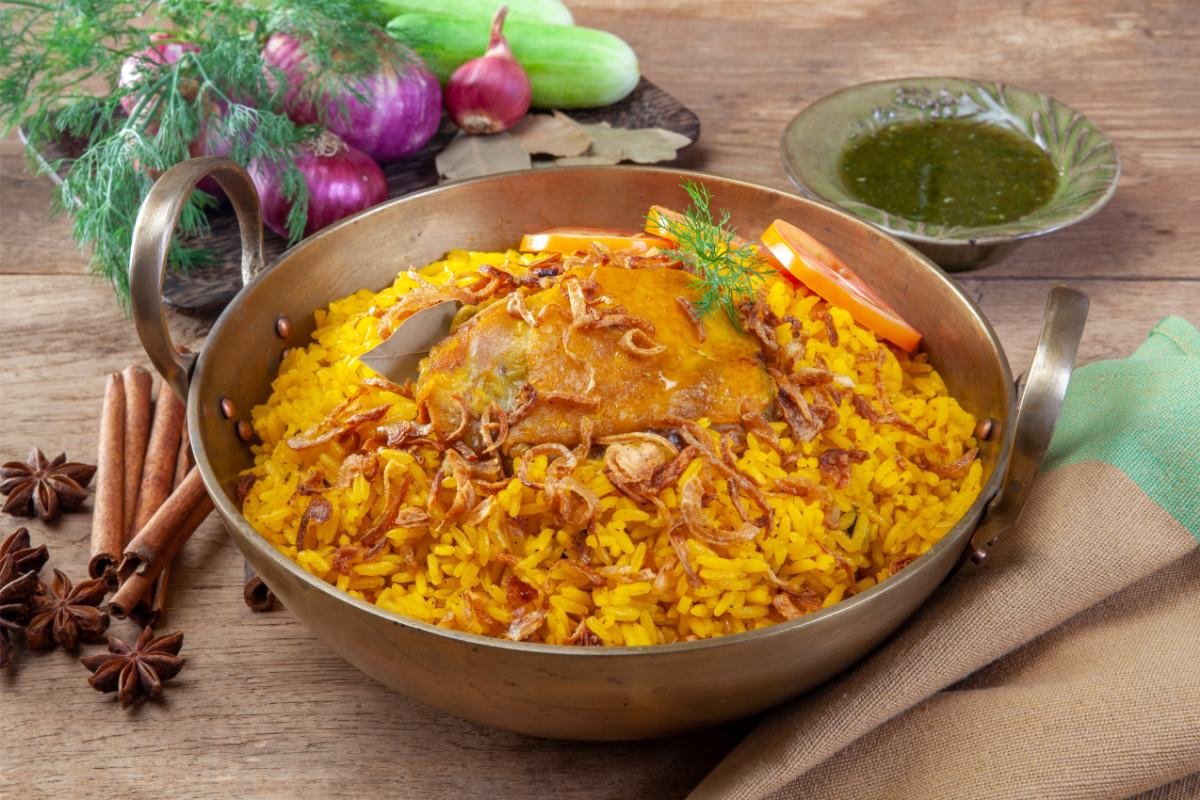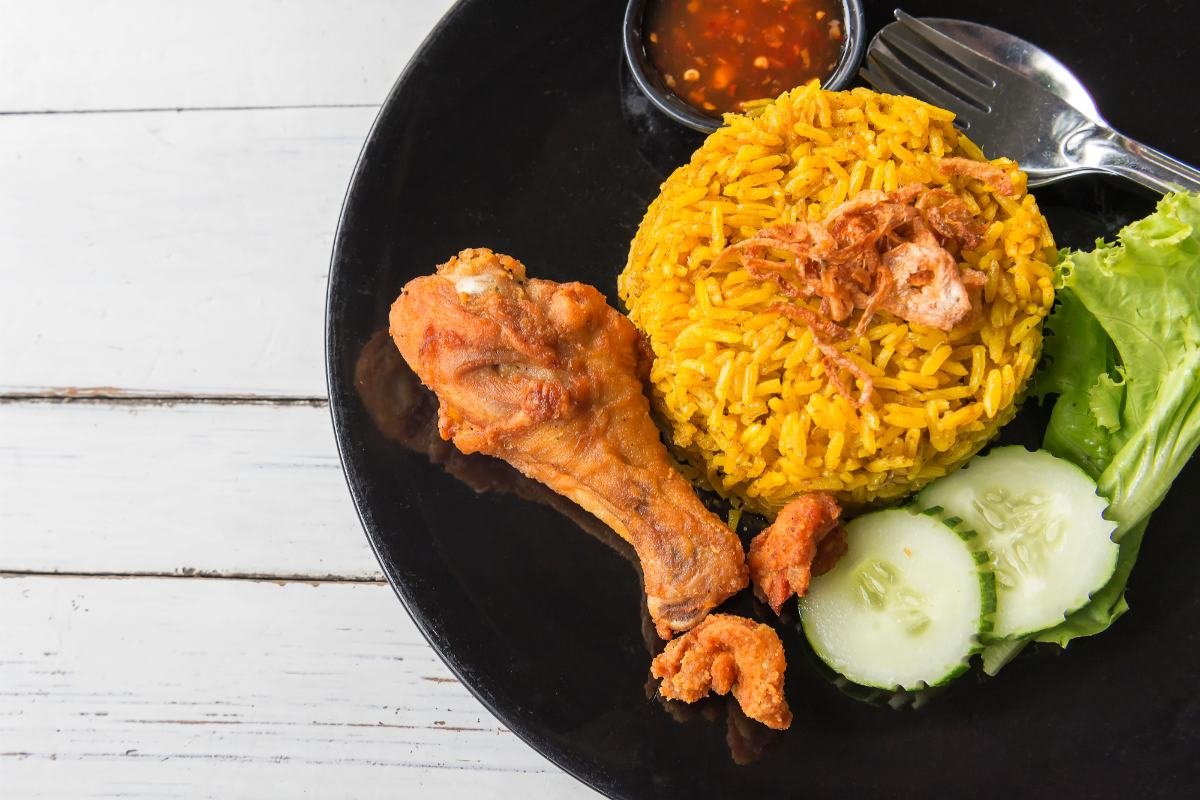Chicken and yellow rice is a global favorite. It blends vibrant colors, rich flavors, and warmth. Many cultures have their own versions. In Spain, it’s “Arroz con Pollo.” In the Middle East and Asia, spices like saffron and turmeric add color and depth. This dish symbolizes unity and celebration. It adapts to local tastes, showing its versatility. This guide covers traditional and modern takes on the recipe. Whether you’re a seasoned cook or a beginner, you’ll find valuable insights here.
Ingredients and Equipment Needed

Embarking on the culinary journey of preparing chicken and yellow rice, you’ll need a curated list of ingredients that blend to create a palette of flavors and colors. This section not only outlines these crucial components but also highlights the essential kitchen tools and equipment required to bring this dish to life. Let’s get into the specifics, ensuring your kitchen is prepped and ready for cooking.
Ingredients for Chicken and Yellow Rice
- Chicken: For this recipe, opt for 1.5 pounds of chicken thighs, bone-in and skin-on, for their richer flavor and moisture. Chicken breasts can serve as a leaner alternative.
- Rice: Use 2 cups of long-grain rice, such as Basmati or Jasmine, known for their aromatic qualities and perfect texture.
- Broth: 4 cups of chicken broth will not only cook the rice but also infuse it with additional depth and warmth.
- Onion & Garlic: Chop 1 large onion and mince 3 cloves of garlic to build a foundational flavor base.
- Bell Peppers: Slice 1 red and 1 green bell pepper for a splash of color and a sweet, tangy taste.
- Spices: Combine 1 teaspoon of turmeric and 1/2 teaspoon of saffron threads to achieve the signature yellow color and a fragrant, slightly earthy flavor.
- Peas: Stir in 1 cup of frozen peas towards the end of cooking for a pop of green and sweetness.
- Lemon: The juice of 1 lemon will brighten the dish, adding a zesty, fresh finish.
- Olive Oil: You’ll need about 2 tablespoons of olive oil for sautéing and bringing the dish together.
- Salt and Pepper: Season to taste, ensuring the flavors are balanced and to your liking.
Essential Kitchen Tools and Equipment
- Large Skillet or Dutch Oven: A heavy-bottomed pan is crucial for even cooking and preventing the rice from sticking or burning. Opt for one with a lid to cover the rice as it simmers.
- Cutting Board and Sharp Knife: Preparing your ingredients with precision starts with a sturdy cutting board and a sharp knife, essential for chopping vegetables and cutting chicken.
- Measuring Cups and Spoons: Accuracy is key in cooking, making measuring cups and spoons indispensable for following the recipe correctly.
- Wooden Spoon: A wooden spoon is gentle on your cooking surface and ideal for stirring the rice and vegetables, ensuring an even mix without crushing the ingredients.
- Lemon Juicer: Extract maximum juice without the seeds using a lemon juicer, elevating the dish with fresh lemon zest.
- Colander: Rinse your rice thoroughly in a colander under cold water to remove excess starch, ensuring fluffy rice that doesn’t clump together.
With these ingredients and tools at your disposal, you’re well-equipped to tackle the chicken and yellow rice recipe. This list bridges the gap between preparation and the culinary artistry required to craft a dish that’s both visually appealing and delicious. As we move forward to the step-by-step recipe instructions, keep these ingredients and tools in mind, as they form the backbone of your cooking experience.
Variations of the Recipe
The beauty of chicken and yellow rice lies in its versatility and the ease with which it can be adapted to suit various tastes, dietary preferences, and regional ingredients. This section explores a range of variations that allow you to customize the dish, ensuring it remains a favorite in any household. From vegetarian twists to low-carb alternatives, these adaptations ensure everyone can enjoy the essence of this classic dish.
Vegetarian Version
For those who prefer a plant-based diet, transforming chicken and yellow rice into a vegetarian delight is straightforward and satisfying.
-
Replace Chicken: Swap the chicken for hearty vegetables like portobello mushrooms, zucchini, and eggplant. Sauté these vegetables until they’re tender and golden, then proceed as with the original recipe.
-
Vegetable Broth
: Use a rich vegetable broth instead of chicken broth to cook the rice, maintaining the dish’s depth of flavor.
Seafood Variation
Seafood lovers can rejoice with a version that incorporates the ocean’s bounty, turning the dish into a vibrant seafood paella.
- Add Seafood: Introduce shrimp, mussels, and clams to the dish. Cook the seafood with the sautéed onions and bell peppers before adding the rice and broth, ensuring they’re perfectly tender.
- Saffron: Increase the amount of saffron slightly to complement the seafood’s flavors, enhancing the dish’s aromatic profile.
Low-Carb Alternative
Adapting chicken and yellow rice for a low-carb diet is easier than you might think, without sacrificing the dish’s essence.
- Cauliflower Rice: Replace traditional rice with cauliflower rice for a low-carb base. Sauté the cauliflower rice in the skillet after cooking the chicken and vegetables, then mix well to absorb the flavors.
- Adjust Cooking Time: Cauliflower rice cooks faster than grain rice, so adjust the cooking time accordingly, adding it towards the end of the cooking process.
Spicy Version
For those who enjoy a bit of heat, adding spice to chicken and yellow rice can create an exciting flavor profile.
- Hot Spices: Incorporate spices like cayenne pepper, chili powder, or diced jalapeños to the dish. Start with a small amount and adjust according to your heat preference.
- Spicy Garnish: Serve with sliced fresh chili or a drizzle of hot sauce for an additional kick that spice lovers will appreciate.
Gluten-Free Adaptation
Making chicken and yellow rice gluten-free is naturally achieved, as the dish primarily relies on rice and fresh ingredients.
- Check Broth: Ensure the chicken or vegetable broth is certified gluten-free, as some brands may contain additives that include gluten.
- Cross-Contamination: Be mindful of cross-contamination if you’re cooking in a kitchen where gluten-containing products are also prepared.
Regional Twists
Explore the flavors of different cultures by incorporating regional ingredients and spices, making the dish a global exploration.
- Middle Eastern Influence: Add spices like cumin, cinnamon, and cardamom for a Middle Eastern twist. Garnish with chopped fresh cilantro and serve with yogurt to balance the spices.
- Latin American Flavors: Introduce ingredients like cilantro, lime, and annatto oil. These additions bring a Latin American flair to the dish, offering a fresh and vibrant taste.
These variations on the classic chicken and yellow rice recipe invite experimentation and personalization, making it a versatile dish that can be tailored to any preference or occasion. Whether you’re catering to specific dietary needs or simply exploring new flavors, these adaptations ensure that the essence of chicken and yellow rice can be enjoyed in countless ways.


